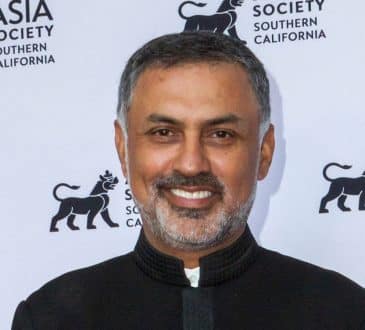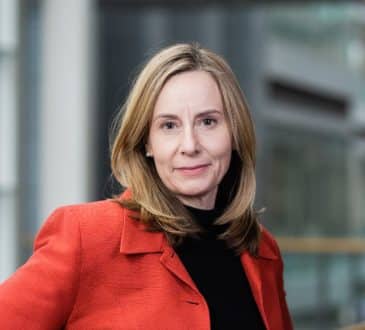Incorporating Diversity and Inclusion Into Your People-First Approach: Building and Keeping a More Equitable Organization

Chief Diversity Officers are staying at companies for less than two years, which is significantly less than other leadership positions. Clearly, companies are still not supporting this role and overall DEI commitments. Here’s a roadmap for CEOs and other members of leadership on how they can incorporate DEI into their people-first approach in order to build a more equitable organization.
The current inclusive actions of corporate leadership are insufficient. There. I said it.
Valuing DEI means confronting uncomfortable truths, such as addressing levels of privilege. In the business world, where 85% of Fortune 500 company CEOs are still men, these integral conversations may not come up organically.
Corporate feminism, which has sadly co-opted the revolutionary standpoint of many forward-thinking activists, has become synonymous with “girl-boss” feminism (or, as I like to call it, “feminism-lite”). This stance fails to embrace the more demanding values of true intersectionality, where Black and Indigenous people still make up only 17% of C-Suite executives.
While diversity, equity, and inclusion (DEI) officers are one answer to this problem, consider this: Chief Diversity Officers (CDO) face a startlingly short tenure of less than two years. It’s worrisome that only 52% of S&P 500 companies have a CDO and many leave within 1.8 years for other opportunities. It’s time to take a closer look at the state of DEI within our organizations and commit to real change.
Mind the Perception Gap
One key disconnect is the perception gap between companies and employees. While companies often believe they’ve made significant progress in DEI, employees feel differently. A recent Gallup survey highlighted this divide, revealing that 97% of HR leaders surveyed believed their organizations had improved DEI, but only 37% of employees agreed (and another 34% said they didn’t know).
This lack of noticeable progress erodes trust and failure to cultivate a diverse workforce harms employee hiring and retention across the board. According to a 2020 Glassdoor survey, 76% of job applicants consider a company’s inclusiveness when considering an offer.
To bridge this gap, we must recognize that DEI is the core culture of an organization and a true reflection of the beliefs and behaviors of leadership. DEI is too often written off as a social movement or dismissed for its so-called “woke mentality” when its core ideals are about creating an environment of belonging and respect.
Extending this people-first mentality throughout leadership and the broader company culture takes time, commitment, and work. Indeed, when leaders continuously demonstrate their willingness to bring DEI officers and their framework to the forefront, we see more significant results and longevity all around.
A successful DEI strategy includes several consistent practices.
- Get real about your commitment:Reflecting on your personal views of diversity, equity, inclusion, and belonging is crucial. Assess whether you’re genuinely passionate about these principles and committed to driving change. Merely treating it as window dressing or going through the motions will hinder your effectiveness as a leader.
And here’s the hardest part of that task—owning up to the gaps where our values and actions fall short. Be critical, be honest, and ultimately, be optimistic about your ability to change and inspire that change in others.
As business leaders, we’re asked to set an example, and I know I’ve sometimes fallen short of this. I’ve been guilty of operating on my own assumptions and employing a “results-first” mentality. However, in order to step outside of gut reactions and snap judgments, we must adopt a “people-first” mindset. Trust and engagement are built when we place the people in our organizations at the top of our priority list. Afterall, it’s through them we get results.
- Make it a value, not a priority: To build a lasting culture of DEI, we must move beyond treating it as a mere priority. Priorities can change; values should remain steadfast. We need to embed DEI into the fabric of our organizations.
This value-shifting might necessitate difficult conversations– are you ready? Are people of color actively listened to within your organization? Do we take it seriously when staff comes to us with micro-aggressions and feedback? Are we encouraging allyship, fostering a culture where everyone feels empowered to speak out against harmful stereotypes or language?
One way to embrace values throughout your organization is by extending decision-making responsibility to all, creating shared ownership and accountability. Encourage diverse perspectives by actively seeking input from individuals from different backgrounds and experiences. When we bring inclusivity to the forefront, we harness our team’s collective intelligence and creativity, creating a stronger sense of ownership.
- Operate on positive assumptions: Jumping to conclusions is often born out of assuming negative motives. It happens to the best of us, and is often an instinctive response.Research showshumans utilize prior experience and on-hand evidence when making decisions. While this highly efficient thought process has helped us survive as a species, in modern life, we have the time and space for conscientious thought before rushing to conclusions. Instead, adopt optimistic assumptions that presume good intentions and capabilities. We need to remember that our assumptions drive our behavior and influence others. We’re better served when we reinforce the positive—especially as a lot of “bad behavior” can be attributed to simple and non-malicious reasons. Operating on positive assumptions about our employees and their potential creates an inclusive environment that promotes curiosity and fosters open and trusting relationships.
DEI cannot rest solely on the shoulders of human resources or the Chief Diversity Officer. Effective change is often uncomfortable. It requires us to confront our ideals, our behavior, and our values. However, progress is a collective effort that requires teamwork, mutual respect, and a sense of belonging. And it’s there, in that shared space, where we can shape a more equitable and inclusive future.
Written by Gloria St. Martin-Lowry.
Have you read?
Wealthiest Sports Owners in the World?
World’s Richest Actors And Their Net Worth.
World Richest Tennis Players And Their Net Worth.
Richest NFL (National Football League) Players.
Top CEOs in Singapore, 2023.
Add CEOWORLD magazine to your Google News feed.
Follow CEOWORLD magazine headlines on: Google News, LinkedIn, Twitter, and Facebook.
This report/news/ranking/statistics has been prepared only for general guidance on matters of interest and does not constitute professional advice. You should not act upon the information contained in this publication without obtaining specific professional advice. No representation or warranty (express or implied) is given as to the accuracy or completeness of the information contained in this publication, and, to the extent permitted by law, CEOWORLD magazine does not accept or assume any liability, responsibility or duty of care for any consequences of you or anyone else acting, or refraining to act, in reliance on the information contained in this publication or for any decision based on it.
Copyright 2024 The CEOWORLD magazine. All rights reserved. This material (and any extract from it) must not be copied, redistributed or placed on any website, without CEOWORLD magazine' prior written consent. For media queries, please contact: info@ceoworld.biz
SUBSCRIBE NEWSLETTER








